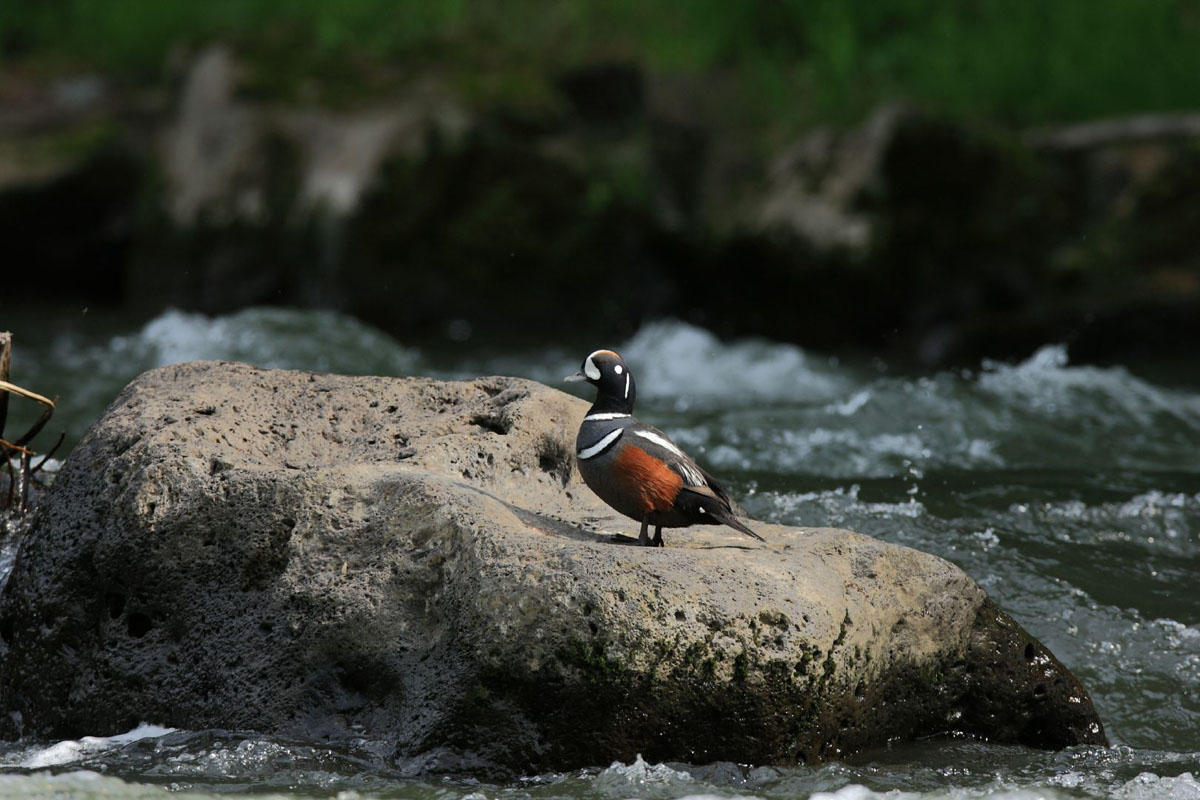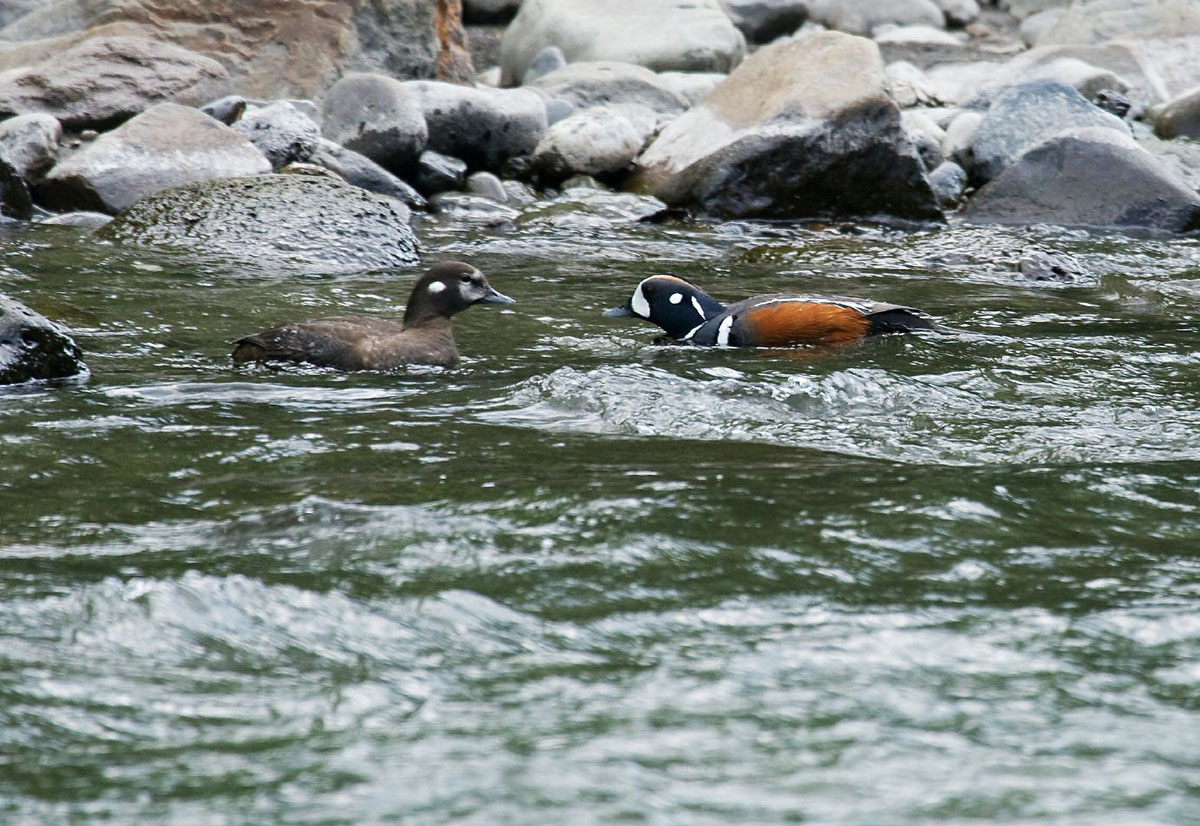Histrionicus histrionicus
IUCN
LCBasic Information
Scientific classification
- name:Histrionicus histrionicus
- Scientific Name:Morning Duck,Histrionicus histrionicus,Harlequin Duck,Harlequin
- Outline:Waterfowl
- Family:Anseriformes Anatidae Duckling
Vital signs
- length:33-54cm
- Weight:500-726g
- lifetime:6-8years
Feature
It has very colorful feathers, resembling the colorful character in Italian pantomime - the harlequin, hence the name.
Distribution and Habitat
There are breeding records in Changbai Mountain area in China. They winter in the eastern coastal areas and stray to Sichuan. They are distributed in Northeast Asia, Greenland, Iceland, northeastern and northwestern North America, and winter in the southern coastal areas of the distribution area.
They breed in mountain streams and winter in rocky coastal waters. They are good at diving, but they often rest on land and rocks when resting, and rarely mix with other geese and ducks.
Appearance
Small sea duck. The male has a large white spot from the base of the beak to the front of the eye and forehead. There is a small round white spot on the ear, followed by a white vertical stripe. The neck has a narrow white collar, white stripes on the chest, shoulders and wing feathers, a small white round spot on both sides of the lower tail coverts, fine red stripes on both sides of the top of the head, large chestnut red spots on both flanks, and the rest of the body feathers are slate blue. The female is dark brown overall, with a white spot on the half face from the base of the beak to the front of the eye, and a small white round spot on the ear. The iris is dark brown, the beak is lead gray, and the feet are gray-black.
Details
The ugly duck lives and inhabits streams, deep recesses between rocks and bushes, and tree holes. In spring, it migrates to the northern breeding grounds from May to early June, and in autumn, it migrates to the wintering grounds from mid-to-late September to mid-to-late October, often in small groups or family groups. Migration usually takes place along rivers and coasts.

It often moves in pairs or small groups, and also gathers in large groups during the non-breeding season. It flies fast, but usually does not fly high. It swims well and is also good at diving. When swimming, the tail is vertically erected, and it is also good at swimming and diving in fast currents. They often dive for food in steep mountain streams, turbulent rivers and reef-filled coastal waves. They dive for a long time, but usually do not dive very deep. Sometimes they dive directly into the water from the steep river bank or coast. When resting, they often stand on the shore or rocks, and sometimes they mix with other wild ducks.

The ugly duck mainly feeds on animal food. They forage mostly during the day. They often forage in fast-flowing rivers, mountain streams and near reef-filled coasts. They mainly forage by diving. Their food mainly consists of mollusks, crustaceans, echinoderms, aquatic insects and insect larvae. It can dive into the water to feed on benthic aquatic animals, as well as mollusks and insects attached to rocks in the water. In addition, it often wades in shallow water near the shore to feed or dives into the water with its head down and its tail up to feed. During the courtship period, the male bird makes a high whistle sound, and the female bird makes a rough and short call. It does not call at other times.

In March 2022, the ugly duck was first discovered in Dafeng Tidal Flats of the Yellow Sea Wetland in Yancheng, my country. This was also the first time that the ugly duck was discovered in Jiangsu Province.








